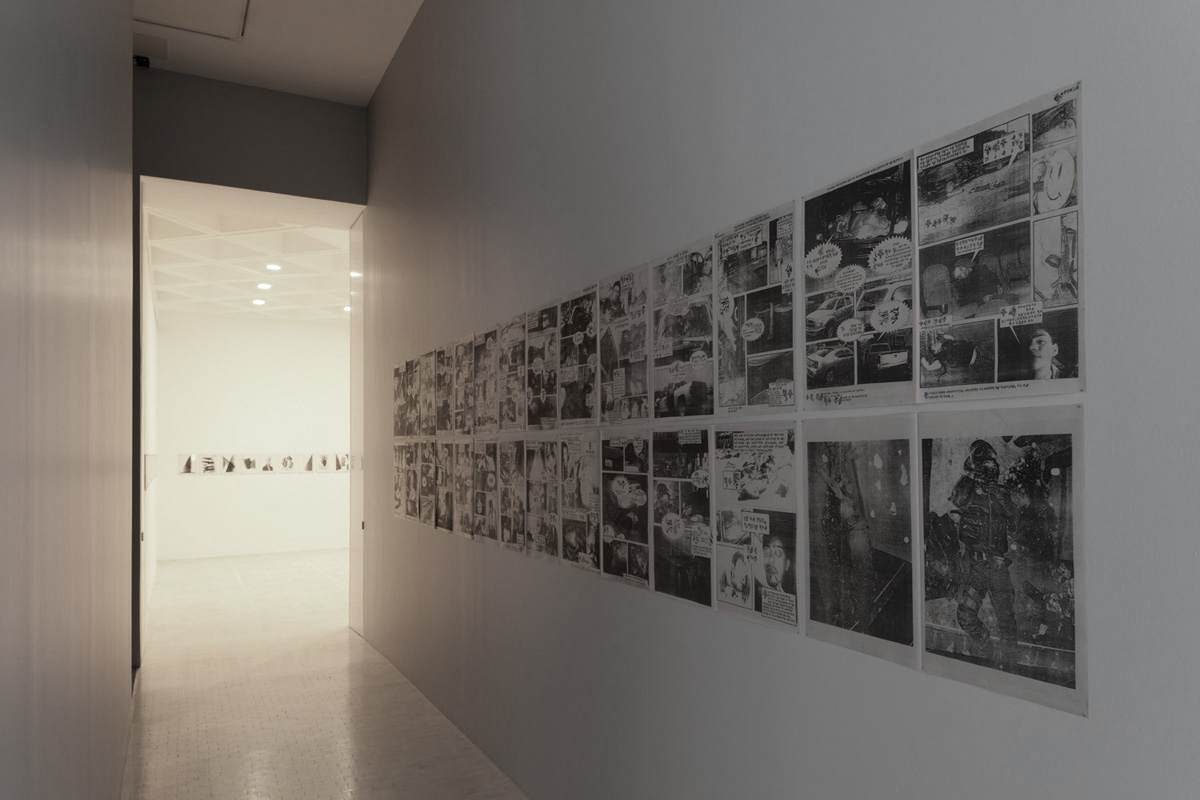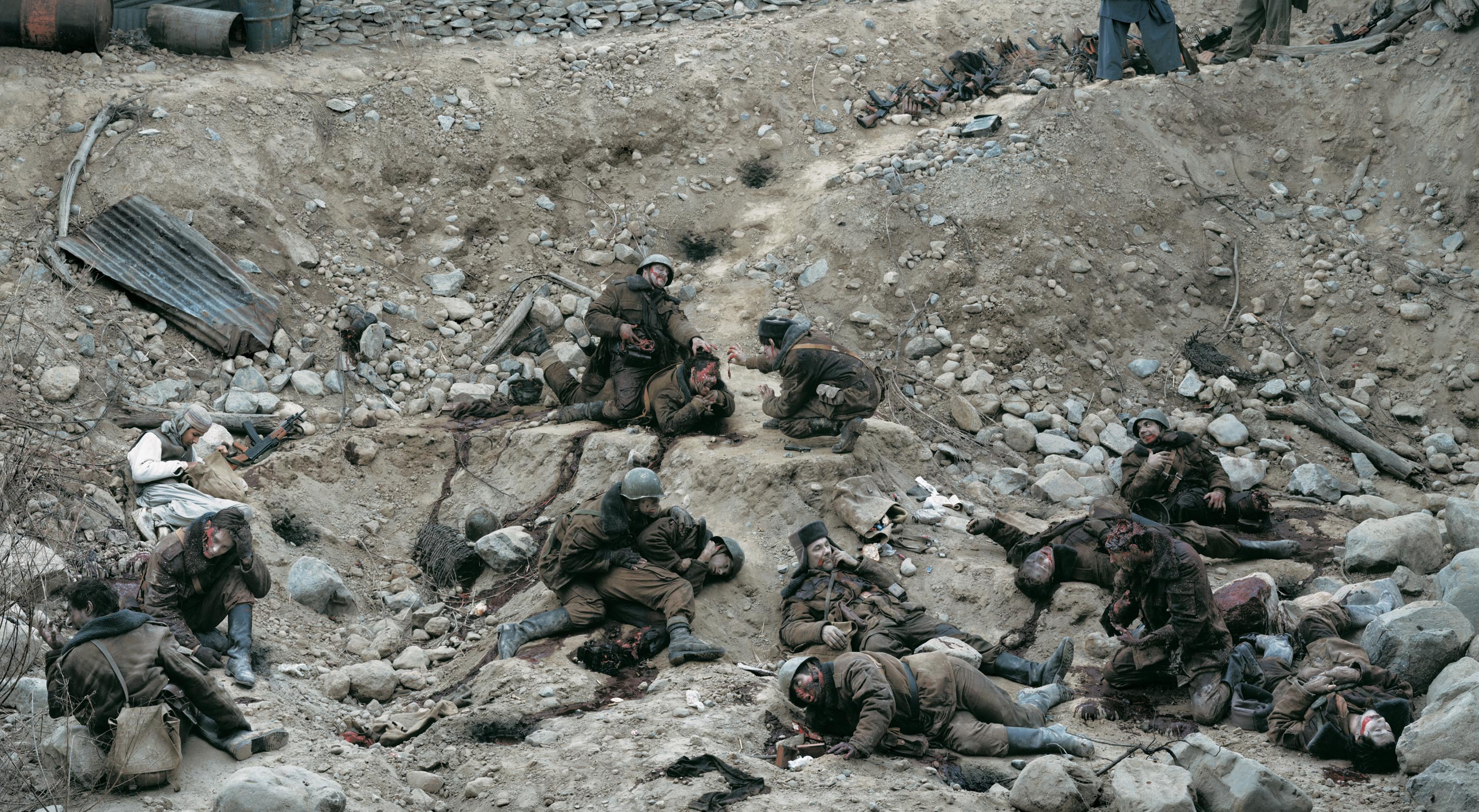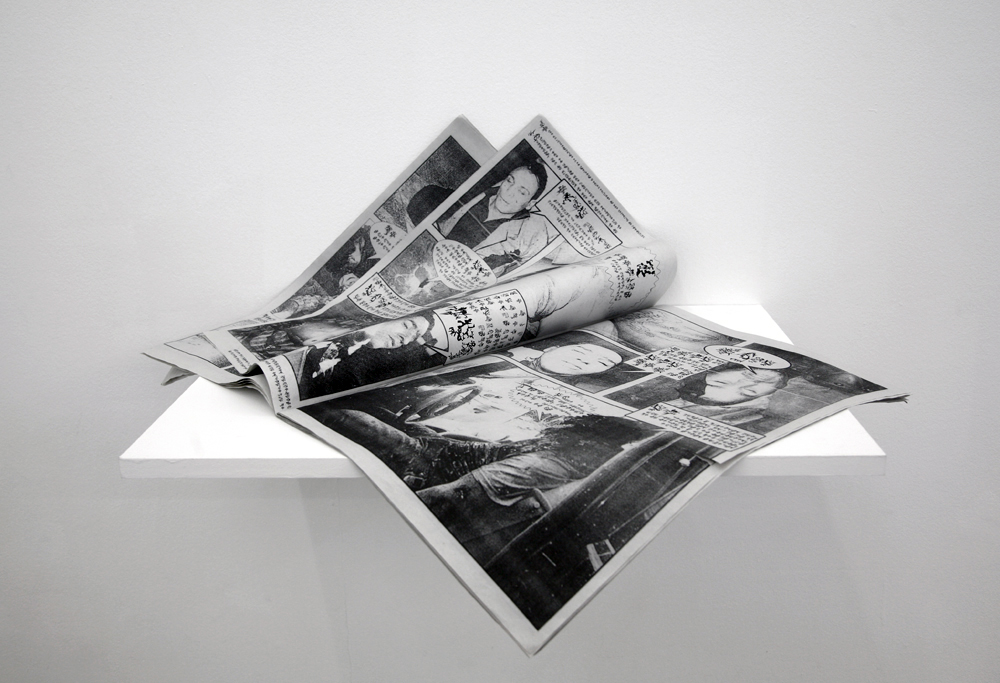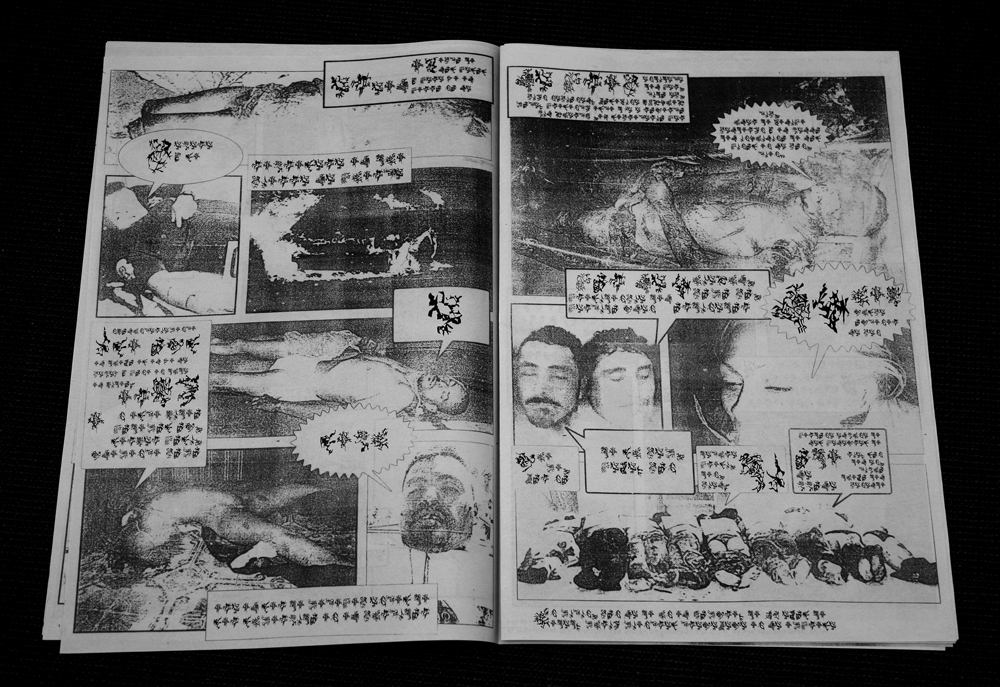Photography and Violence 5: The Language of the Dead. An interview with Carlos Amorales
In The Language of the Dead (2012), Mexican conceptual artist Carlos Amorales (Mexico City, 1970) turns shocking photographs of Mexico’s drug-war dead found online into characters of a photo novel. This photographic novel is composed by fifteen black and white pages in which photographs of dead people, bodiless heads among them, speak to one another. The dead are given the possibility to speak through speech bubbles, but only to speak an indecipherable, inaccessible language to us –all of us who remain alive and dare to look.

Carlos Amorales, La Lengua de los Muertos, 2012. Photo novel, Silkscreen on paper, 37.5 x 57 cm
The Language of the Dead could remind us of a cemetery, of that “other city” according to Foucault. But the cemeteries, those macabre spaces located outside city borders, are generally considered to be “resting places.” Contrarily, in this work the dead seem to be coming back to life. More than anything, the photo novel is a sort of scrap yard, says Amorales, a place “in which we only see mutilated or wounded corpses,” living in a state of “limbo,” in a place that does not belong to the living.
In the following interview, Amorales explains his work process, his motivations, and the emotional aftermath of dealing which such violent content:
How did the project of the photo novel The Language of the Dead start? What led you to start compiling these brutal images from Mexico’s media?
While fragmenting my decade-long visual archive (titled Archivo Líquido) into a series of abstract images I got the idea to arrange them into a typographic system. The typographic system allowed me to build abstract texts that can be decoded (they’re cryptograms), but to the naked eye they are indecipherable, they seem made with a font based on the images of the Rorschach cards. Given the incomprehensible aspect of the signs, it occurred to me to do a photo novel about something that I also didn’t quite understand: the violence that erupted after the arrival of President Calderón to power in Mexico in 2006. My feeling was, and still is, that the more I read and get informed about the violence of recent years, the less I understand. This inability to understand made ??me associate the typographic signs with the photographs of violence, and fantasize that this language could be that of the dead.
There is a photograph by Jeff Wall in which one sees a squad of Russian soldiers rising after they had just been killed in combat in Afghanistan. There is something comical and disturbing about that image –maybe the feeling that awakens is the idea of ??a kind of meaningless life after a violent death, and that is what inspired me to make such a grotesque piece. In The Language of the Dead there only appear bodies that were shot or mutilated, we don’t see anyone alive. The narrative takes place in a world that is not of the alive; it takes place in another world. Since the bodies, or fragments of them, are lying on the floor, the only action which they can embark is to speak. In this narrative/temporal sense, the events are only potential because the subjects may or may not be waking up, may or may not get up and walk. It’s the beginning of something, but what is about to happen is not yet clear.

Jeff Wall, Dead Troops Talk (a vision after an ambush of a Red Army Patrol, near Moqor, Afghanistan, winter 1986), 1992. Silver dye bleach transparency; aluminum light box 90 3/16 x164 3/16″ (29 x417 cm). David N. Pincus, Philadelphia.
Can you talk about the process of selecting the images? What sort of criteria did you employed?
I collected as many images I was able to find on the Internet about the violence of recent years in Mexico. Of all the images, I chose those in which only dead people appeared. I also selected certain images that function more as signs: the gunned cars, the broken glasses, etc. Then I printed the images and photocopy them to 1) take away their color, and 2) mitigate the harshness of the images by making the photographs lose their realistic quality.
Did you use pictures from particular media?
From several media, from Proceso magazine to El blog del Narco, or even more obscure blogs that I encountered along the way. The pornography of violence is similar to sexual pornography; it’s everywhere and is very accessible.

Carlos Amorales, La Lengua de los Muertos, 2012. Photo novel, Silkscreen on paper, 37.5 x 57 cm.
Given the unstoppable cascade of deaths in Mexico (about 120,000), did you feel the need to make a political work that criticizes the bellicose policies of Calderón’s administration? Did you have the intention that your work could contribute to the effort of providing “justice” to the victims?
I don’t think my work does any justice to the victims. That is something that the government and the criminal groups have to do, and it’s not the artist’s responsibility. To think otherwise seems stupid and even dangerous. I did felt the need to criticize but from the point of view of an ordinary citizen who was (and still is) being bombed with this mediated information that has generated a culture of terror that affects us all. Calderón was the one that irresponsibly triggered ??this huge slaughter and its unfolding in the media, but the problem is old and is ongoing. I just made my comment based on my experience as being subject to the information that the media published. That’s why I worked with these images and sequenced them in a medium that is a hybrid of a photo novel and a newspaper.

Carlos Amorales, La Lengua de los Muertos, 2012. Photo novel, Silkscreen on paper, 37.5 x 57 cm
Did you have any ethical problem with exposing these images, that are so brutal?
Yes, of course. They are horrible and one cannot help but be aware of that. The macabre aspect of these images awakens a sense of shame similar to the one that is awakened by hard-core pornography. I can illustrate this by saying that I had to process these images and form the pages of the photo novel always at night, to prevent my young children from seeing them. Also, after spending several hours a day processing these images in order to abstract its harshness, I felt a very particular taste and smell, like blood impregnated in my mouth and throat. The images also affected my dreams, as I woke up with a feeling similar to that of a hangover, a strange and depressive hangover. The effect was very disturbing. That’s why it gave me so much happiness to finally sent everything to print, closed the file, and put an end to this work.
For more images of The Language of the Dead visit this link:
http://estudioamorales.com/la-lengua-de-los-muertos/
